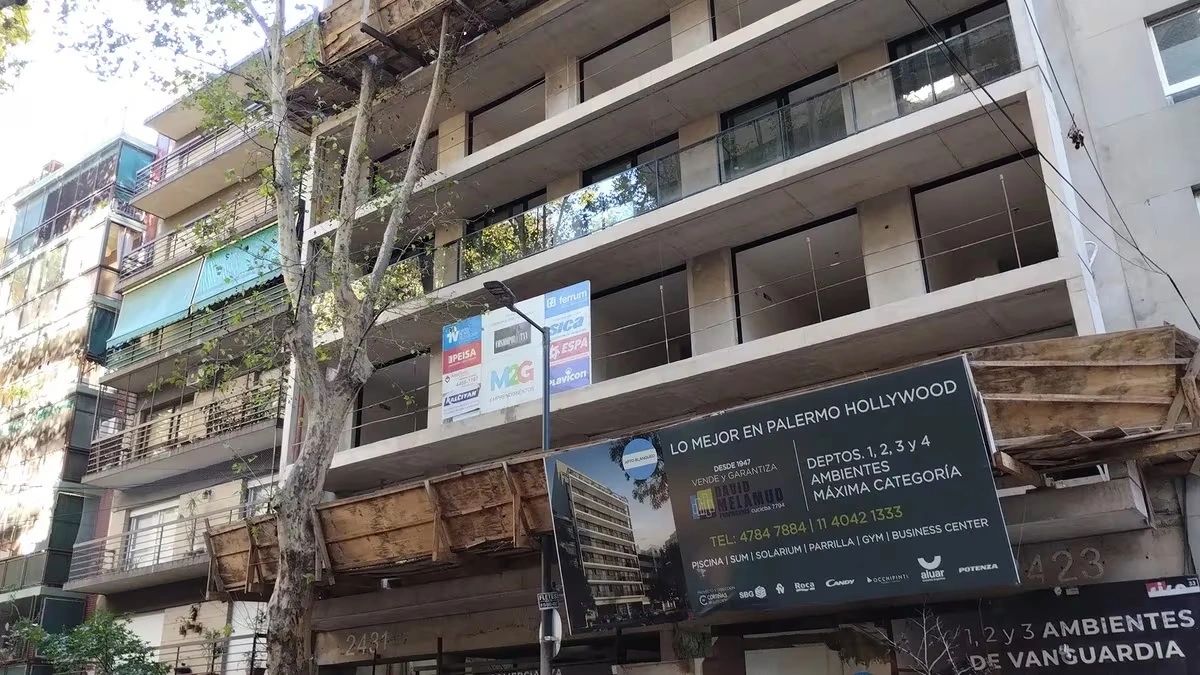BuySellBA
Administrator
Adjustments to the Urban Planning Code of CABA: Adverse opinions among experts and neighborhood associations - Infobae

Source:

Real Estate
Noticias del mundo en tiempo real. Información, videos y fotos sobre los hechos más relevantes y sus protagonistas. Léelo antes en infobae.
July 30, 2024
The Buenos Aires City Government presented the guidelines for the revision of the Code, mandatory every four years. The modification, based on consultations, generated diverse opinions, in particular due to the exclusion of small developers.
By Jose Luis Cieri

Currently in CABA there are more than 50,000 homes under construction
The Buenos Aires City Government headed by Jorge Macri presented to the Buenos Aires City Legislature the guidelines to adjust the Urban Planning Code (CUR), which is mandatory to be reviewed every four years according to the law. This review, supported by meetings with individuals, professionals and institutions, seeks to adjust and balance urban development.
There are currently more than 50,000 homes under construction in different neighborhoods that will not be affected. The changes that the Buenos Aires Legislature hopes to approve will begin to take effect once the adjustment to the CUR comes into effect, which is expected to occur towards the end of the year.
The summary aspects of the project that will be addressed by the CABA legislative branch are published below:
- Balancing urban development between North and South.
- Promote the protection of neighborhood heritage and identity.
- Do not allow buildings that do not respect the neighborhood's essence.
- Large developments only on avenues with adequate infrastructure.
- Definitively catalog 4,209 properties with architectural value.
- Promote urban sustainability and environmental quality.
- Encourage the development of neighborhood centers and the southern zone.
- Promote single-family use and reduce height in low-density areas such as USAB 2.
Santiago Levrio , Institutional Director of Alianza Urbana, expressed his disappointment with the proposal of the city government: “The project fails to establish a clear model of urban development, overlooking the sustainability and accessibility that nearby cities offer. We criticize the prohibition of building outside the avenues, favoring large developments over small SME buildings, which could negatively affect the sector and prevent reinvestment in the city.”
He also highlighted the lack of consideration for “infrastructural inequalities” between the different areas, exemplifying the contrast between Mataderos and Colegiales. “The debate has only just begun and a thorough review is needed that goes beyond current regulations, avoiding deepening past mistakes,” added Levrio.
The adjustment to the CUR proposes introducing significant changes in Palermo SoHo, Devoto and Colegiales, reducing the height and construction capacity. Although these modifications are required by law and necessary to monitor the impact of the Urban Environmental Plan, their constant implementation generates uncertainty and back and forth.
After the treatment and voting in the first reading, a Public Hearing is called in about 15 days; after this, there is a maximum period of 90 days for the final vote in the second reading.
The lack of a long-term urban plan suggests that these decisions are more a response to the impulses of current officials or neighbourhood groups than to a consensual and planned approach, according to the sector.
Gonzalo Bustos , director of FOT Libre Terrenos, said that there does not seem to be a coherent long-term plan. “The modifications are promoted without a clear vision and are applied indiscriminately to areas with different needs, such as the south and north of the city, which shows a lack of knowledge of the specific characteristics of each area,” he said.
This methodology benefits large developments, leaving aside the small and medium-sized developers that build on a small scale in all the neighborhoods. According to Bustos, this type of change perpetuates uncertainty in the sector and will negatively affect smaller companies that are essential for neighborhood development.
“It is crucial to have a comprehensive urban plan that considers the peculiarities and needs of each area, rather than following momentary impulses,” Bustos added.
Neighbors reject it
For their part, residents who make up the Interbarrial group (which brings together more than 20 areas of CABA) expressed their concern about the construction of buildings in the city, arguing that it must be done in a planned manner to avoid harm to residents and the affected areas, especially with regard to the lack of essential services such as energy and water pressure.
In Parque Chas, residents prefer to maintain the neighborhood identity and do not want high-rise buildings to be built
Members of Conciencia Urbana C11, which includes the neighborhoods of Villa General Mitre, Villa Devoto, Villa del Parque and Villa Santa Rita, told Infobae that they participated in the Urban Environmental Plan Forum, but that the information provided was superficial and general. In addition, the residents criticized the absence of additional instances of institutionalized participation, except for the public hearing in the Buenos Aires Legislature once the project was approved in the first reading.
The project seeks to preserve the identity of each neighborhood and improve the quality of life, protecting zoning and limiting large developments to avenues. Residents criticize the densification and the increase in permitted heights, which in their opinion negatively affect the neighborhood structure and encourage real estate speculation. In special sectors A and B, restrictions and adjustments are proposed to consolidate main corridors, preserve residential areas and catalog properties with architectural value.
www.buysellba.com

